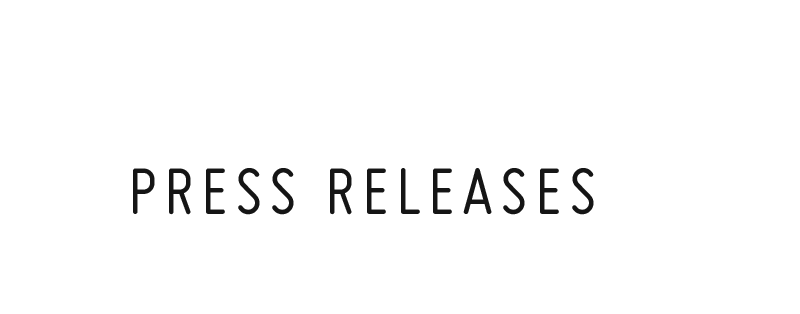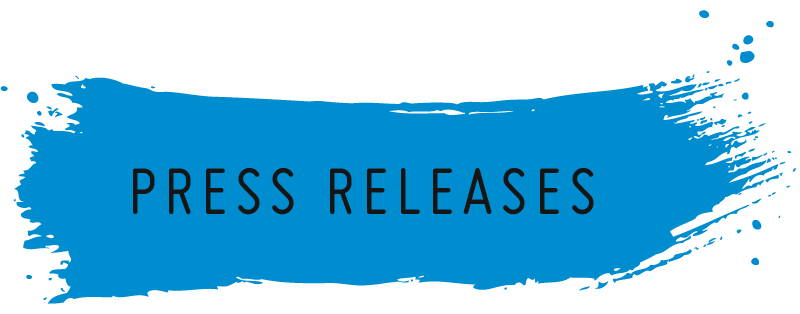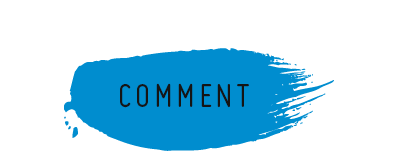- 3D Print Bureau
- 6K
- Agmatix
- Airwayz
- AM-Flow
- Appadda
- Caracol
- CG Trader
- CyberOptics
- e-Xstream
- GenCell
- GreenEye
- Impossible Objects
- Incus Media
- InkBit
- ITG
- JPB Systeme
- KeyProd
- Landa
- LEO Lane
- Lumet
- Magic Software
- MakerBot
- Marketiger
- Nano Dimension
- Paragon Rapid Technologies
- PearlX
- Plant & Bean
- Redefine Meat
- Replique
- Ripples
- Sakuu Corporation
- SolarEdge
- StoreDot
- Stratasys
- Sunrock
- The Bespoke Group
- Trigo
- UltiMaker
- Xjet
STRATASYS FDM 3D PRINTING SUPPORTS GERMAN SPACE EXPLORATION MISSION TO MARS
- Stratasys is cooperating with the Institute for Robotics and Mechatronics (Institut für Robotik und Mechatronik) of the German Aerospace Centre (Das Deutsche Zentrum für Luft- und Raumfahrt e.V.) in the production of a TransRoPorter for unmanned missions to Mars
Minneapolis & Rehovot, Israel, June 21, 2017 – Stratasys Ltd. (Nasdaq:SSYS), the 3D printing and additive manufacturing solutions company, today announced that the German Aerospace Centre (Das Deutsche Zentrum für Luft- und Raumfahrt e.V.) is using Stratasys FDM 3D printing for the production of a fully-working prototype of ‘TransRoPorter’ (TRP).
TransRoPorter, built at the Institute for Robotics and Mechatronics (Institut für Robotik und Mechatronik), is an exploration robot designed for unmanned flights to Mars and set for launch in four to five years. To successfully explore Mars with a robot, design and functionality are key factors to meeting the objectives of the mission. Using a Stratasys Fortus 900mc Production 3D Printer, the research team 3D printed a working prototype, significantly reducing production times compared to traditional methods. This enables the team to test the design and functionality of the robot under simulated extreme conditions ahead of time.
Dr. Kaj Fuehrer, Head of System Building Technology South (Leiter Systemhaus Technik Süd), is developing and testing the 3D printed robot prototype together with his colleagues Dr. Stefano Seriani und Dr. Armin Wedler. The TransRoPorter is made from two components: the moveable TRP Rover-Unit, made to navigate in unstructured terrain, and the Payload-Module (PM), which carries spare parts, communication technology and scientific tools. To ensure functionality and practicality of the 3D printed prototype, rigorous testing is required.
Fast production
In developing the TransRoPorter prototype, it is essential for the part to fit the design, be customized to exact specifications and have specific material properties. “For us it was clear, a prototype made out of metal was too expensive and complex in production,” explains Dr. Fuehrer. Therefore the team decided on a 3D printed prototype, which is not only produced faster than the alternative out of metal, but also with less associated costs. The metal alternative also needs to be finished post-production – more work with additional costs.
“In the planning of this project, we always preferred 3D printing technology,” he continues. “It became evident to us that using 3D printing for the production of the TransRoPorter was truly the least expensive, fastest and most elegant solution. Everyone involved in the project is delighted with the outcome.”
Optimizing functionality
In addition to the time and cost savings, the functionality of the prototype was critical to Dr. Fuehrer and his team. “Our prototypes are often very complex and typically push the boundaries of what is possible,” says Dr. Fuehrer. “Therefore, it is important to choose the appropriate production method and material, so that we can achieve the desired functionality without any limitations.”
Using the Stratasys Fortus900mc Production 3D Printer, the research team are 3D printing large parts in FDM thermoplastic materials. According to Dr. Fuehrer, the ASA material was ideally suited for testing the TransRoPorter prototype, enabling the team to produce a strong enough Box to contain all the technology safely within.
“It was extremely important that the fit was right, that the box could be mounted to the tracks and the docking port worked,” he explains. “Utilizing Stratasys FDM 3D printing technology, we found that the material basically has no distortion. The decision for ASA material was consciously made, as it is ideal for our purposes and handling.”
Stefano Seriani adds: “The stability of the ASA material also played a large role for us. We needed a fully functional prototype that could perform in all tests and withstand the strain of the design. The tough and rigid properties of the Stratasys material were therefore an ideal fit to test the TransRoPorter’s functionality for its journey to Mars.”
Gaining valuable knowledge
According to Dr. Fuehrer, 3D printing also supports other strategic goals. “A new technology leads to new thought processes. Over the past few years, many colleagues are already thinking in 3D and are involving additive manufacturing into plans for other projects they are starting with. This new knowledge has opened them up to a new set of possibilities within product development.”
Andy Middleton, President Stratasys EMEA, concludes: “We are proud to support the German Aerospace Centre (Das Deutsche Zentrum für Luft- und Raumfahrt) in achieving its mission to Mars. The project is a prime example of how our FDM 3D printing technology and materials can enable designs to be tested quickly in extreme conditions, particularly important in aerospace where complex geometries are required and each part needs to be qualified. We look forward to seeing how additive manufacturing will be adopted further along the development of the TransRoPorter.”
-
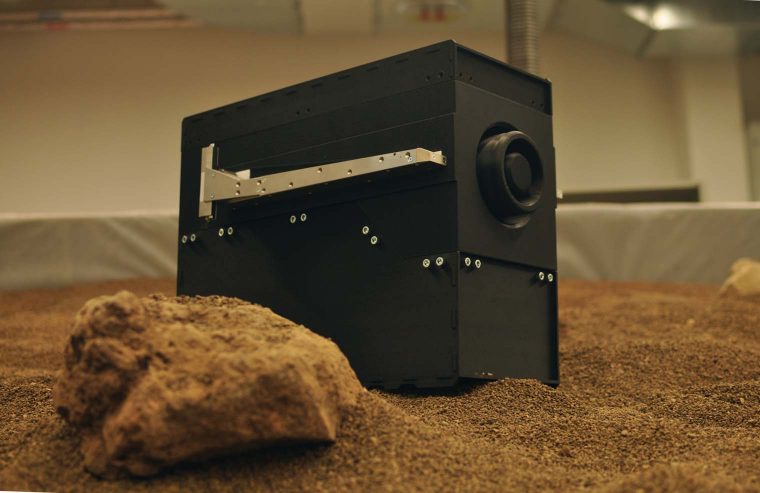 TransRoPorter Prototype with FDM 3D printed components
TransRoPorter Prototype with FDM 3D printed components
Click here to download 300dpi images -
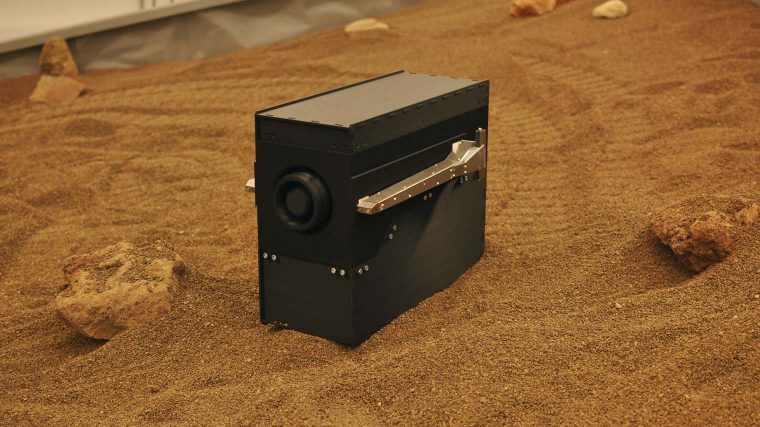 TransRoPorter Box printed on the Stratasys Fortus 900mc 3D Printer
TransRoPorter Box printed on the Stratasys Fortus 900mc 3D Printer
Click here to download 300dpi images
STRATASYS 3D-DRUCK UNTERSTÜTZT DEUTSCHE WELTRAUMFORSCHUNG FÜR MARSMISSION
- Stratasys kooperiert mit dem Institut für Robotik und Mechatronik des Deutschen Zentrum für Luft- und Raumfahrt e.V. (DLR) bei der Herstellung eines TransRoPorters für unbemannte Marsmissionen
Minneapolis & Rehovot, Israel, 21. Juni 2017 –Stratasys Ltd. (Nasdaq:SSYS), das Unternehmen für Lösungen im Bereich 3D-Druck und Additive Fertigung, gab heute bekannt, dass das Deutsche Zentrum für Luft- und Raumfahrt e.V. (DLR) FDM-3D-Drucktechnologien von Stratasys bei der Herstellung eines voll funktionsfähigen Prototypen eines TransRoPorters (TRP) einsetzt.
Der TransRoPorter, gebaut am Institut für Robotik und Mechatronik, soll als Erkundungsroboter für unbemannte Flüge zum Mars eingesetzt werden. Die erfolgreiche Erforschung des Mars setzt Design und Funktionalität des Roboters als oberste Kriterien für den Erfolg der Mission vorraus. Das Forschungsteam verwendete einen Stratasys Fortus 900mc Produktions 3D-Drucker, um einen voll funktionsfähigen Prototypen zu bauen. Das führt nicht nur zu Zeitersparnissen in der Herstellung im Vergleich zu traditionellen Methoden, sondern ermöglicht dem Zentrum das Design und die Funktionalität unter simulierten extremen Bedingungen im Vorraus zu testen.
Dr. Kaj Führer, Leiter Systemhaus Technik Süd, entwickelt und testet dort mit seinen Kollegen Dr. Stefano Seriani und Dr. Armin Wedler den Prototypen des Erkundungsroboter. Der TransRoPorter besteht aus zwei Komponenten: eine bewegliche TRP Rover-Einheit, die zum navigieren in unstrukturiertem Gelände entwickelt worden ist, und dem Payload Module (PM), welches Technik wie Ersatzteile, Hilfsmittel, Kommunikationstechnologien und wissenschaftliche Instrumente aufbewahrt. Daher muss die Funktionalität und das Design dieser Einheiten des 3D-gedruckten Prototypen genau getestet werden.
Schnelle Herstellung
In der Entwicklung des TransRoporter Prototypen ist es wichtig, dass das Design praktisch umsetzbar ist und die gewünschten Materialeigenschaften besitzt. „Für mich war klar, dass ein Prototyp aus Metall zu teuer und zu aufwändig in der Herstellung ist“, erläutert Dr. Führer. Daher entschied sich das Team für den Stratasys 3D-Druck, welcher im Vergleich zu einem Prototypen aus Metall nicht nur schneller, sondern auch wesentilich günstiger produziert werden kann. Darüber hinaus müsste die herkömmlich in Metall hergestellte Alternative nachbearbeitet werden, durch schweissen und verschrauben – ein zusätzlicher Aufwand, der mit Mehrkosten verbunden ist.
„Bei der Projektplanung sahen wir von Anfang an die 3D-Drucktechnologie vor,“ erklärt Dr. Führer. „Es hat sich gezeigt, dass diese Fertigungsform tatsächlich die günstigste, schnellste und eleganteste Lösung ist. Alle Beteiligten sind zufrieden mit diesem Ergebnis.“
Optimierte Funktionalität
Zusätzlich zu einer zeitsparenden Lösung war Dr. Führer und seinem Team die Funktionalität des Prototypen wichtig. „Prototypen sind bei uns oft sehr komplex und entstehen am Rande des technisch Machbaren“, so Dr. Führer. „Deshalb ist es wichtig, die richtige Fertigungstechnologie und Material auszuwählen, damit die gewünschte Funktionalität von Anfang an ohne Einschränkungen gegeben ist“.
Mit einem Stratasys Fortus 900mc Produktions 3D-Drucker, kann das Forschungsteam gröβere Teile im FDM-Verfahren drucken. Laut Dr. Führer ist das Standardmaterial ASA perfekt für Test- und Demonstrationszwecke des TransRoPorter Prototypen geeignet, da es den Forschern ermöglicht eine stabile Box herzustellen, welche die geplanten Mengen an Instrumenten transportieren kann.
„Es war extrem wichtig, dass die Maßhaltigkeit stimmt, so dass die Box auf die Schienen passt und vor allem der Docking-Port funktioniert“, erläutert Dr. Führer. „Durch die Herstellung mit der FDM-Technologie von Stratasys hat das Material praktisch keinen Verzug. Die Entscheidung für ASA haben wir dabei ganz bewusst getroffen, da es vom Handling her optimal geeignet ist.“
Die Stabilität des verwendeten Materials spielt ebenfalls eine groβe Rolle. „Wir brauchten einen voll funktionsfähigen Prototypen, um alle nötigen Tests unter Belastung durchführen zu können”, erklärt Stefano Seriani. Die robusten und widerstandsfähigen Eigenschaften des Stratasys Materials passten daher sehr gut, um den TransRoPorter für seine Funtionsfähigkeit für eine Reise zum Mars zu testen.
Erkenntnisgewinn
Laut Dr. Führer unterstützt die 3D-Drucktechnologie auch andere, strategische Ziele. „Eine neue Technologie führt auch zu neuen Denkansätzen. Viele Kollegen denken jetzt schon in 3D-Druck und beziehen diese Fertigungsmethode bei der Planung ihrer Projekte von Anfang an mit ein. Es hat sich ein neues Verständnis entwickelt, welche neuen Möglichkeiten sich bei der Produktentwicklung eröffnen.“
Andy Middleton, President Stratasys EMEA, erklärt: „Wir sind stolz das Deutsche Zentrum für Luft- und Raumfahrt in der erfolgreichen Umsetzung der Marsmission zu unterstützen. Das Projekt ist ein tolles Beispiel dafür, wie unsere FDM-Technologie sowie unsere Materialien es ermöglichen, dass Designs schneller unter extremsten Bedingungen getestet werden können. Das gilt speziell für die Luft- und Raumfahrt, in der komplexe Entwürfe häufig vorkommen und einzelne Teile qualifiziert sein müssen. Wir freuen uns darauf zu sehen, wie die Additive Fertigung in der Entwicklung weiterer Projekte mit einbezogen wird.”
-
 TransRoPorter Prototyp mit FDM Komponenten
TransRoPorter Prototyp mit FDM Komponenten
Click here to download 300dpi images -
 TransRoPorter Box, 3D-gedruckt auf der Stratasys Fortus900mc
TransRoPorter Box, 3D-gedruckt auf der Stratasys Fortus900mc
Click here to download 300dpi images
